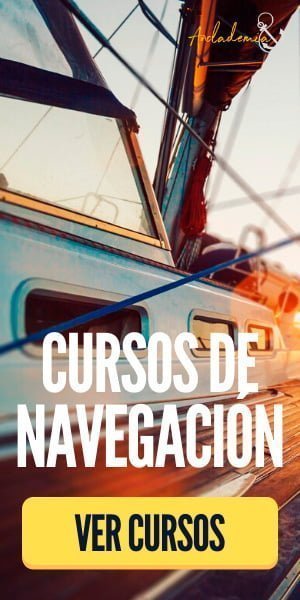To be considered a good sailor it is necessary to learn a multitude of techniques and concepts related to navigation. Today we want to focus on the moorings of a ship, fundamental elements that will allow us to dock the boat well. In fact, this concept is one of those that makes up the agenda of the PER exam (Pattern pleasure craft). You want to know more? You just have to keep reading.
What is mooring a boat?
When we talk about mooring a boat we are referring to the maneuver that allows us tie a boat to a fixed element (docking in a port) or floating (to another ship). An effective and safe mooring must withstand various forces such as wind, tide, waves and current.
To proceed with a good mooring it is necessary to have correct rope management:
- Capling a gauze to a bollard: The gauze is passed over it. If there is already another hooded loop, this is opened and passed inside, so that both boats can exit without hindering each other.
- Tie by breast: Action that consists of passing the bosom of a rope through a bollard, bollard or ring located on the dock or pontoon and securing both anchors on the boat. This way of mooring has the advantage of making undocking easier (no help needed).
- take turns: Hold a rope, cable or chain, twisting it in the shape of a “figure eight” over any device on board to tie ropes.
- make firm: Fix a rope, cable or chain using knots or turns, thus preventing all movement.
Collecting in ropes: each of the circular or oblong turns or threads of a rope, chain or rolled sail is called ropes.
Terms used in Mooring
In order to delve deeper into the topic, the first thing is to know the main terms related to mooring:
- Charge: pull a rope, cable or chain in order to collect it manually.
- Tack: pulling a rope, cable or chain in order to pick it up by means of a machine.
- Tesar: tighten a rope, cable or chain (it can also refer to a sail).
- Temper: put a rope, cable or chain under tension.
- Grind: little by little release a rope, cable or chain (as opposed to hunting).
- Lascar: loosen a rope, cable or chain that is working a little.
- Lower: Loosen and let a rope, cable or chain run. Also referred to sails or flag.
- Release: Completely release a rope, cable or chain. It is usually used with mooring ropes.
Types of moorings
There are four fundamental formulas when taking moorings. Using one or the other depends on the angle at which they are placed in relation to the boat:
Long moorings
It is the most common way to take hold. It allows you to place the boat in a very comfortable position to later go sailing.
They are the moorings that They work towards the same head as the one through which they come out.. That is, those that come from the bow work towards the bow and those that come from the stern work towards the stern.
They are used to place or locate the boat in an initial position and are given as far as possible (as long as possible) forward or backward respectively. They serve to keep the ship attached to the berth and fundamentally to prevent its longitudinal displacements.. Therefore, the bow length will prevent the ship from moving aft and the stern length will prevent it from moving forward.
Cross Moorings
It is the mooring that calls through the beam, that is, it is found perpendicular to the bow-stern line. It can be placed in the center at the bow and at the stern. Its purpose is to leave the boat as close to the dock as possible and to the mooring area and prevent it from being detached from the berth. It is very effective in preventing transversal movements from occurring.
Esprín (or spring) moorings
It is the rope that, starting from the bow or the stern, calls towards the stern or towards the bow, respectively, in an inclined manner, that is, they work diagonally. Logically there are two, the bow one and the stern one. The purpose of using this system is to avoid longitudinal movements at those times when the boat is alongside.
Elbow Ties
It is a rope that is tied to the bow or stern and is used to tie a boat to a buoy located in a port or dock. From the opposite side, another one is used, which is the one that is tied to the dock. Its placement must be perpendicular to the exit point. Its purpose is to keep the boat separated from the pontoon to prevent, in case of bad weather, the hull from hitting the dock and suffering damage. It can also be used as an aid line for undocking.
Use of moorings according to wind and current
Depending on where the wind or current comes from, when docking we must follow the following guidelines:
- With current or land wind, the first line to give will be the length of the bow.
- With current or wind from the sea, the first line to deal with will be the stern elbow pad.
Perhaps this article has made you even more eager to be the one steering a boat. At Anclademia we help you throughout the process of obtaining PER. We are experts in PER theoretical courses and we also offer approved internships, necessary to obtain the degree. You want to know more? You just have to consult our courses and, in a few months, you will be able to be the one at the helm of a ship! Cheer up!




